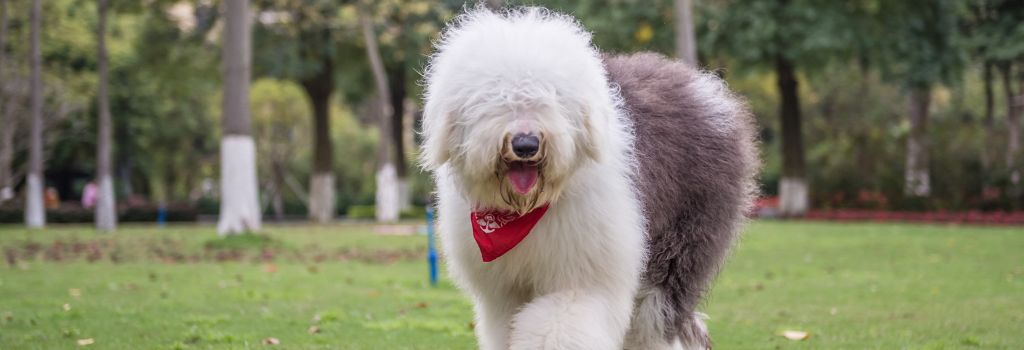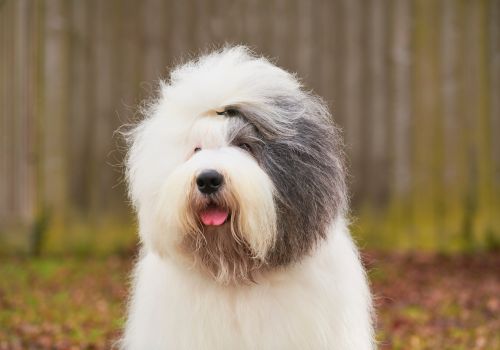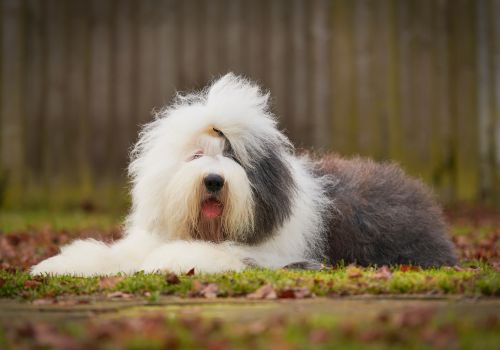A breed that is just impossible to ignore—the Old English Sheepdog, or as enthusiasts lovingly call them, the "Sheepie." These canines aren’t just dogs; they're fluffy bundles of love and enthusiasm that fit into your family like the missing piece of a jigsaw puzzle. Let's delve into what makes them such captivating companions.
What Makes a Sheepie Special?
Old English Sheepdogs are walking bundles of love and affection. Their easygoing nature makes them adaptable to most environments, and let's not forget their stellar watchdog skills—a Sheepie's bark is as big as its heart!
Bouncing around with pure joy, these fur-buddies are also remarkably enthusiastic and eternally loyal. With their friendly personalities, they mesh well with children and other pets, making them ideal family members. And if it's playfulness you're after, Sheepies are ever ready for a game of fetch or a spirited romp around the yard.

The Flip Side of Sheepie Charms
But remember, no dog is a saint, and Sheepies are no exception. For instance, their herding instincts are strong—they might even try to 'herd' your kids or other pets! They're prone to boredom and can be mischievous when left alone, often finding ways to get into trouble.
Training them may require a dose of patience as they can be quite strong-willed. They also tend to struggle with heat, so make sure you have plenty of water and shade for those hot days. As puppies and young adults, they can be exuberant to the point of rowdiness. And keep in mind, they're attention-lovers, so frequent family time is a must.
The Spotlight's on Them!
But oh, how could you not adore them? With their infectious enthusiasm and clownish ways to grab attention, they win your heart over and over again.
A Nod to Their History
Sheepies have been around since the 19th century, originating in England. Cattlemen initially used them to drive livestock to market, which explains their natural herding tendencies. Renowned for their distinct gray and white shaggy coats, they're hard to miss. Ever wonder about their ‘bobtail’ nickname? Fun fact: owners used to dock their tails to indicate they were working dogs, thus avoiding certain taxes.
The Sheepie is a lively and adaptable fur-friend who revels in outdoor activities and just being part of the family. They're social, intelligent, devoted, and are unlikely to stray from their human pack.
In summary, with an Old English Sheepdog by your side, life is bound to be full of love, laughter, and a fair amount of fur. Just give them the attention and care they deserve, and you’ll have a loyal friend for life. Raise a paw to the Sheepie, the ultimate family entertainer!

Genetic Predispositions for Old English Sheepdogs
When Your OES Gets Bloated: Understanding the Risk of Bloat
Let's talk about something a bit heavy—bloat or Gastric Dilatation and Volvulus (GDV). If you're the proud parent of an Old English Sheepdog (OES), it's especially important to be aware of this condition. Bloat occurs when your pup's stomach twists on itself, filling up with gas and cutting off the blood supply. This can be fatal in as little as 30 minutes if left untreated. Keep an eye out for symptoms like restlessness, retching, an enlarged belly, or a 'prayer position' (front feet down and rear end up). Preventative surgeries exist to tack the stomach in place, but if you spot these symptoms, rush to an emergency hospital right away!
Hip, Hop, and Oops: Dealing with Hip and Elbow Dysplasia
Our lovable OESs are also susceptible to hip and elbow dysplasia, a condition that can make those furry legs less bouncy. It's an inherited issue that affects joint development and can result in arthritis. Signs may include difficulty standing up, lameness, or general stiffness, especially as your OES matures. Early detection is key; X-rays can spot trouble before it turns into greater suffering. Surgery is an option for severe cases, and it's worth noting that pups who are overweight are at a higher risk for early arthritis.
Growing Pains: The Dangers of Osteochondritis Dissecans (OCD)
Young OES puppies can sometimes grow too quickly for their own good, leading to a condition known as osteochondritis dissecans (OCD). When this happens, the cartilage in their joints doesn't attach properly to the bone, requiring surgical intervention. To keep your pup healthy, stick to a growth rate of no more than four pounds per week and opt for a large-breed puppy diet. Regular weigh-ins every three to four weeks can help you stay on track.
Blood Matters: Inherited Bleeding Disorders in OES
Old English Sheepdogs can be prone to various inherited bleeding disorders, some of which may only become evident when it's literally a matter of life and death—like during surgery or a severe injury. Two conditions to know are Hemolytic Anemia and thrombocytopenia, where the immune system starts attacking the pet’s own red blood cells or platelets. This could lead to anemia, abnormal bleeding, or bruising. Before any surgery, your vet will perform blood clotting tests to ensure your pet’s safety. In severe cases, transfusions may be needed.
The Silent Challenge: Von Willebrand’s Disease
Von Willebrand's Disease is another clotting disorder often found in Old English Sheepdogs. It's essential to conduct diagnostic tests for this condition before any surgical procedure. Your vet will guide you through this to make sure your fluff ball is as safe as possible.
The Sugar Struggle: Diabetes in Sheepdogs
Diabetes mellitus—a condition that's fairly common in dogs, but particularly prevalent in Old English Sheepdogs. Symptoms can include increased eating, drinking, urination, and weight loss. Early diagnosis is critical, so if you notice these signs, consult your vet for lab tests. Managing diabetes requires a serious commitment but can lead to a normal life expectancy for your dog if well-regulated.

All About Allergies
OES (Old English Sheepdog) lovers, have you ever noticed your furry friend constantly licking their paws or scratching their ears? No, they're not just being dramatic; they might be suffering from atopy, a skin allergy. OESs are known to be more prone to these skin allergies, which are usually triggered by pollen, mold, or dust. While humans sneeze their way through allergies, our fur babies suffer from itchy skin. The symptoms can emerge between ages one and three and often intensify each year. The silver lining? There are various treatment options to help your pet find relief, so don't lose hope!
The Heart of the Matter: DCM in OESs
When it comes to our beloved OESs, it's essential to have their hearts checked regularly, especially since they're at a higher risk for dilated cardiomyopathy (DCM). Imagine a heart so big it can't pump blood efficiently—that's DCM for you. The condition can cause your pup to act lethargic, cough, or even faint. But don't worry! Yearly ECGs or echocardiograms can catch this early, and medication can manage it effectively.
Seeing Clearly: OES Eye Problems
Cataracts and eyelid abnormalities like entropion can be real party-poopers for our OES friends. While cataracts cloud their vision, entropion makes their eyelashes rub against their eyeballs—ouch! If you notice anything off about your dog's eyes, don't hesitate to get it checked. Surgical interventions can work wonders, and many dogs adapt well to vision loss.
Wobbling through Life: Neurological Issues
Does your OES walk like they've had one too many drinks? This could be a sign of wobbler disease, a neurological disorder that disrupts the signals from the spinal cord to the brain, affecting your dog's balance. Medications and even neck braces can help manage the symptoms, offering your pup a more stable life.
Liver Concerns
Our OESs are also prone to Portosystemic Shunt (PSS), a liver disorder that impedes the organ's growth and function. If left untreated, this could lead to stunted growth and even seizures. Regular liver function tests during anesthesia and additional tests for symptoms can help manage this condition, sometimes even requiring surgery.
Unfortunate Cancer Risks
Lymphoma is, unfortunately, more common in OESs than in other breeds. It affects white blood cells and can show up almost anywhere in the body. While it's a scary diagnosis, chemotherapy has a high success rate for treating lymphoma in dogs. Meanwhile, Osteosarcoma, a bone cancer more common in OESs, needs early detection for effective treatment. Watch out for any signs of lameness or leg pain and consult your vet ASAP.

Tackling Bladder and Kidney Stones
Another ailment to be on the lookout for is kidney or bladder stones. Signs of trouble include blood in the urine and urination difficulties. If you notice these symptoms, it's a medical emergency, and you should contact your vet immediately.
Mite-y Troubles: Mange
Although all dogs have Demodex mites, OESs can have a mite overpopulation that leads to skin issues known as mange. If you spot dry, hairless lesions, especially on the face or feet, consult your vet. It's usually a manageable condition, so don't worry too much!
Addison’s Disease and Hypothyroidism
Lastly, OESs are more likely to suffer from Addison's Disease, where the adrenal glands underperform, and Hypothyroidism, a condition where the thyroid gland doesn't produce enough hormones. Symptoms for both can mimic other illnesses, making them hard to diagnose. Routine blood tests and electrolyte checks can help identify these issues early, and they are usually manageable with medication.
If you have questions and you'd like to reach out to us, you can call us directly at (770) 426-6900, or you can email us at [email protected]. Don't forget to follow us on social media Facebook, Instagram.
